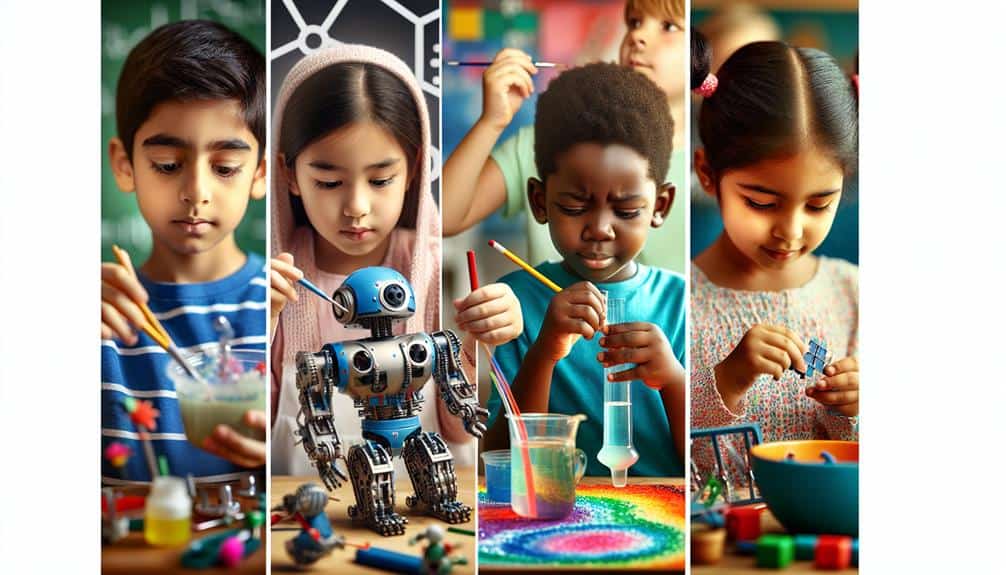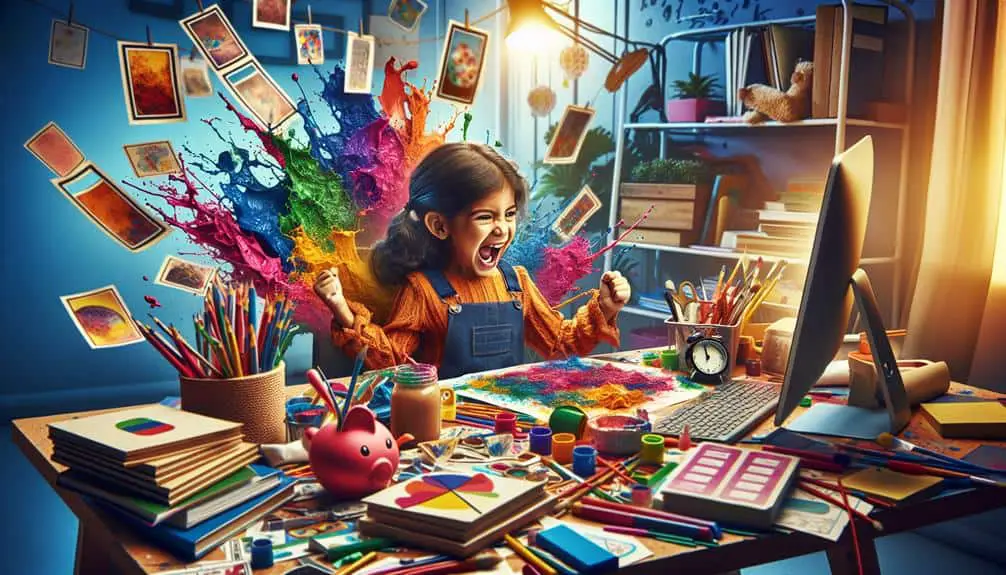Revitalize your homeschooling with a dynamic curriculum blending project-based learning. Embrace creativity, critical thinking, and real-world skills in each project. Tailor activities to your child's interests for enhanced motivation and retention. Assess their progress through rubrics and constructive feedback, focusing on the learning journey. Seek resources like Outschool and Khan Academy for interactive classes and educational materials. Explore DIY.org and Google Arts & Culture for hands-on challenges and art exploration. PBS LearningMedia offers videos and activities to enrich project-based lessons. Harness the potential of project-based learning for a vibrant homeschooling experience that prepares your child for success.
Key Points
- Tailor projects to individual interests for increased motivation and creativity.
- Assess learning through projects to gauge understanding and skills development effectively.
- Incorporate real-world projects to connect academic concepts with practical applications.
- Utilize resources like Outschool and Khan Academy for project-based learning support.
- Focus on the process in project evaluation to provide constructive feedback for improvement.
Benefits of Project-Based Learning Curriculum
Engage your students in a dynamic learning experience by implementing a project-based curriculum that fosters creativity, critical thinking, and real-world application. Project-based learning (PBL) is a powerful tool for increasing student engagement and promoting creativity. By working on projects that are hands-on and relevant to their lives, students are more likely to be motivated and invested in their learning. This approach allows students to explore topics in depth, encouraging them to think critically and problem-solve creatively.
Research has shown that PBL helps students develop a deeper understanding of the material as they apply what they've learned to real-world situations. This not only enhances their retention of information but also equips them with valuable skills that are essential for success in the 21st-century workforce. Moreover, PBL encourages collaboration among students, allowing them to work together to achieve a common goal, fostering a sense of community and teamwork. In this way, project-based learning not only enhances academic achievement but also cultivates important social and emotional skills.
Incorporating Real-World Projects
To enhance the effectiveness of project-based learning, you must seamlessly integrate real-world projects that connect academic concepts to practical applications, fostering a deeper understanding and relevance for students. Authentic experiences are key in this integration, as they provide students with the opportunity to apply their knowledge in real-life scenarios. By engaging in hands-on activities that mimic situations they may encounter outside the classroom, students can see the direct impact of what they're learning.
Incorporating real-world projects also helps students develop essential skills such as critical thinking, problem-solving, and communication. For instance, creating a project where students design a sustainable garden not only teaches them about environmental science but also requires them to think critically about factors like water conservation and biodiversity.
Tailoring Projects to Individual Interests
Designing projects tailored to individual interests empowers students to take ownership of their learning journey and fosters a personalized educational experience. When personalized projects are aligned with students' passions and preferences, engagement and motivation naturally follow.
Here are five key ways in which tailoring projects to individual interests can enhance student learning:
- Increased Motivation: Personalized projects tap into students' intrinsic motivation, making learning more enjoyable and rewarding.
- Enhanced Relevance: By connecting projects to students' interests, learning becomes more relevant and meaningful in their lives.
- Boosted Creativity: Tailored projects inspire creativity as students are more invested in exploring topics they're passionate about.
- Improved Retention: When students are engaged in projects aligned with their interests, they're more likely to remember and apply what they've learned.
- Fostered Independence: Personalized projects encourage students to take initiative, fostering independence and self-directed learning skills.
Assessing Learning Through Projects
Evaluation of project-based learning outcomes plays an indispensable role in gauging students' understanding and application of concepts within a dynamic homeschool curriculum. Project-based appraisal involves measuring students' performance on projects to assess their comprehension and skills development. To effectively evaluate project outcomes, consider using rubrics that outline specific criteria for evaluation. These rubrics can help provide clear expectations for students and offer a structured way to assess their work.
When evaluating project-based learning, it's essential to focus not only on the final product but also on the process. By examining how students approach tasks, collaborate with peers, and problem-solve throughout the project, educators can gain valuable insights into their learning journey. Additionally, providing constructive feedback during the project encourages continuous improvement and reflection.
Resources for Project-Based Homeschooling
Explore a diverse array of online platforms and educational tools that cater to project-based homeschooling, offering interactive lessons and engaging resources to enhance your child's learning experience. When diving into project-based resources, creativity and hands-on learning are key elements to keep your child engaged and excited about their educational journey.
Here are five top resources to contemplate:
- Outschool: Provides a wide range of live online classes that encourage hands-on projects and creative exploration.
- Khan Academy: Offers free, high-quality educational resources that can be integrated into project-based learning activities.
- DIY.org: A platform where kids can showcase their skills through hands-on challenges and projects.
- Google Arts & Culture: Allows students to explore art and history through interactive exhibits and virtual tours.
- PBS LearningMedia: Offers a variety of educational videos, games, and activities that can be incorporated into project-based lessons.



